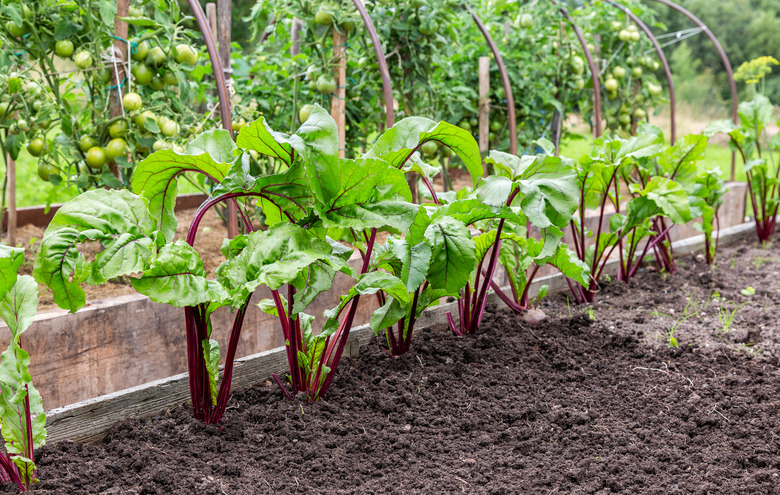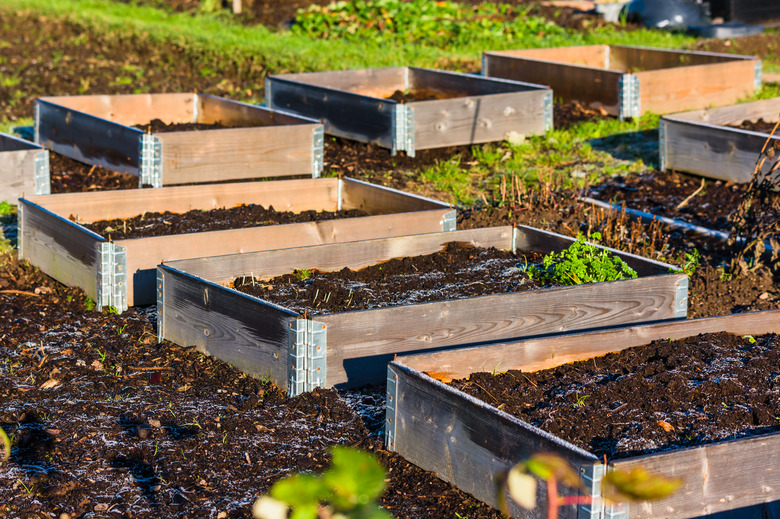Should I Use Railroad Ties In My Garden?
We may receive a commission on purchases made from links.
It's common to see old railroad ties used in DIY projects in garden design and landscaping, like as retaining walls, landscape edging, fence posts, or raised planter beds, but there are dangers of treated railroad ties you should consider. Railroad ties are treated with chemical preservatives, such as creosote and chromated copper arsenate. Both of these chemicals are banned for residential use, and they're potentially harmful to humans and plants. Make sure you understand the risks of using creosote railroad ties in your landscaping.
Tip
Treated railroad ties can cause skin blistering with prolonged contact or respiratory damage when inhaled during burning or cutting. Chemicals can seep into soil and groundwater, contaminating local ecosystems.
Railroad Ties Can Damage Bare Skin
Railroad Ties Can Damage Bare Skin
Studies show skin exposure to creosote-treated products like railroad ties can cause skin blistering or peeling. Humans shouldn't use creosote-treated railroad ties where frequent or prolonged contact with bare skin can occur. Long-term, direct skin exposure to the coal tar creosote in railroad ties, as with all forms of creosote, has been linked to cancer of the skin and scrotum. While railroad ties have weathered by the time they are retired by the railroads, it's recommended to wear long sleeves, pants and work gloves when handling them and washing these separately from other clothing.
Treated Railroad Ties Are Dangerous to Inhale
Treated Railroad Ties Are Dangerous to Inhale
Another one of the dangers of treated railroad ties is inhalation. If you have old railroad ties on your property that you want to get rid of, you should never burn them. Burning can release toxins in the air, which can be dangerous to respiratory health. You should also avoid inhaling sawdust from creosote treated wood.
Polycyclic aromatic hydrocarbons (PAHs) are among 300 chemicals in creosote. PAHs are the same carcinogens contained in cigarette smoke, a known carcinogen. You should avoid inhaling creosote vapors, which can be released by heat. The vapors of creosote tars can build up, as in chimneys. Railroad ties should never be burned in fireplaces or outdoors.
So what should you do if you want to dispose of old creosote-treated wood? The EPA creosote disposal guidelines state that the treated wood can usually go into the regular trash collection stream, such as municipal solid waste. You should check your local and state regulations, though. Some areas may have restrictions on throwing away wood treated with creosote.
Railroad Ties Contaminate Water
Railroad Ties Contaminate Water
The dangers of treated railroad ties aren't limited to you and your family. Railroad ties can leach creosote into soil and water systems. Eating food or drinking water with high levels of creosote may cause burning in the mouth and throat, stomach pains, severe skin irritation, convulsions, and kidney and liver problems in humans.
If the creosote leaches into the groundwater, it can adversely affect the ecosystem and the water quality. Sealing creosote-treated wood may help a little, but the chemicals may still find their way into the soil and groundwater. Railroad ties that are oozing creosote or smell strongly aren't safe to use.
Why You Shouldn't Use Railroad Ties in Your Garden
Why You Shouldn't Use Railroad Ties in Your Garden
Railroad ties seem like an inexpensive way to build DIY raised garden beds or borders, but the dangers of treated railroad ties can outweigh the cost savings. The chemicals can seep into the ground and cause issues, especially if you see creosote leaking out of the wood. Contamination of the ground can cause the plants to die. Growing vegetables in a creosote planting bed is particularly dangerous because the chemicals could make their way into the food you eat.
It's best to go the safe route and choose a wood that isn't treated with dangerous chemicals. While older railroad ties that no longer have a strong smell or ooze creosote should be safe, it's still a risk, especially if you're using the wood in vegetable garden areas, flower beds, or other areas where people will come into contact with the wood.
Alternatives to Railroad Ties
Alternatives to Railroad Ties
Instead of using treated railroad ties, consider using one of these safer alternatives to add visual interest to your garden design:
- Wood pallets
- Pavers
- Pressure-treated wood
- Redwood
- Landscaping timbers
- Stone

